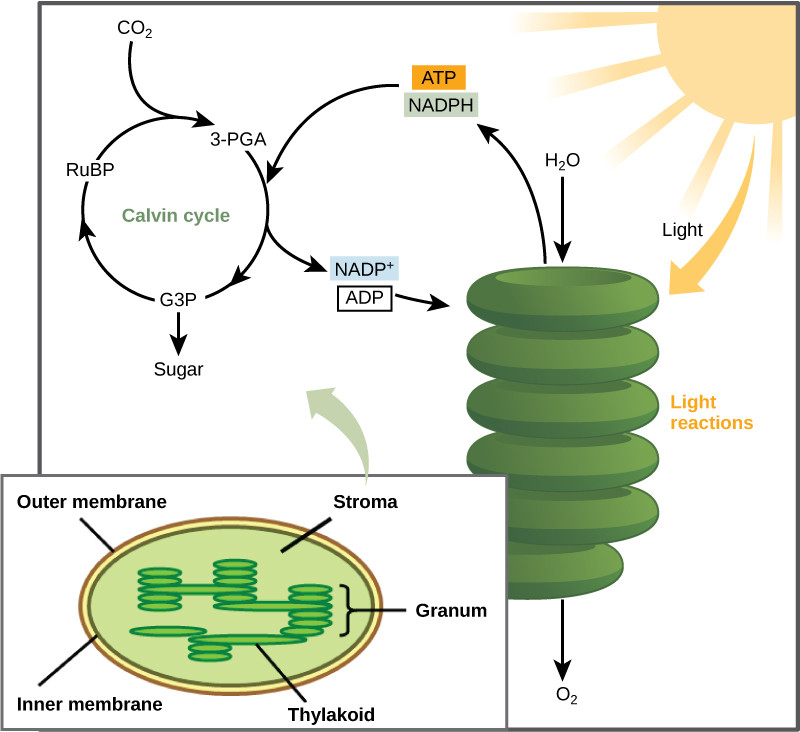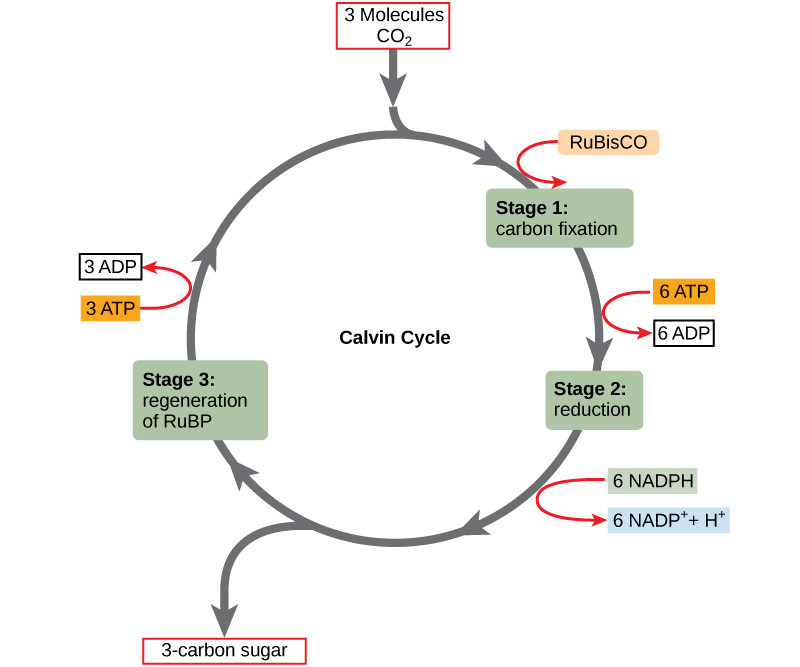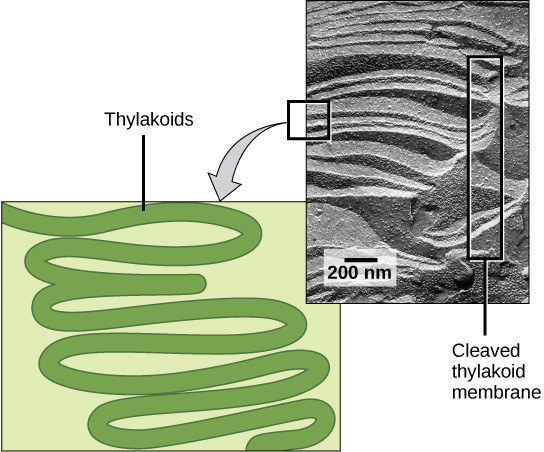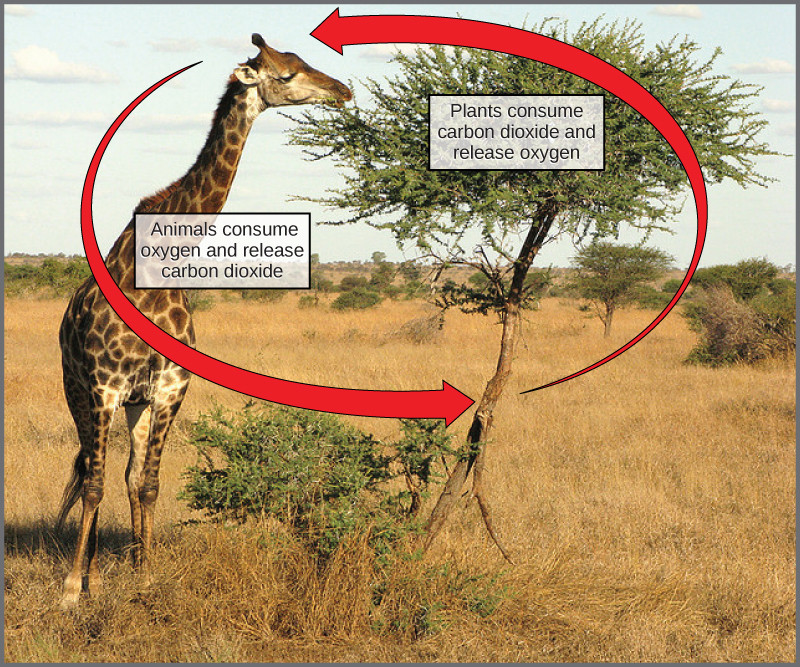Photosynthesis, the remarkable process that sustains life on Earth, converts light energy into chemical energy, producing the carbohydrates that fuel ecosystems. This intricate process is divided into two main stages: the light-dependent reactions and the light-independent reactions, also known as the Calvin cycle. Understanding Where Does The Calvin Cycle Take Place is crucial to grasping the overall mechanism of how plants and other autotrophs create their own food. This article will delve into the precise location of the Calvin cycle, its significance, and its broader context within photosynthesis.
The Chloroplast: The Stage for the Calvin Cycle
In eukaryotic cells, such as those found in plants and algae, photosynthesis occurs within specialized organelles called chloroplasts. These chloroplasts are the powerhouses of plant cells, hosting both the light-dependent and light-independent reactions. To pinpoint where the Calvin cycle takes place, we need to zoom into the chloroplast’s structure.
Chloroplasts are enclosed by a double membrane and contain internal membrane-bound compartments called thylakoids. The light-dependent reactions occur within these thylakoid membranes. However, the Calvin cycle reactions occur in the stroma, which is the fluid-filled space within the chloroplast, surrounding the thylakoids. Think of the chloroplast as a theater: the thylakoid membranes are where the initial light-dependent “performance” happens, generating energy, and the stroma is the stage where the Calvin cycle “performance” takes place, utilizing that energy to build sugars.
 ATP and NADPH from light-dependent reactions fuel sugar production in the Calvin Cycle within the chloroplast stroma.
ATP and NADPH from light-dependent reactions fuel sugar production in the Calvin Cycle within the chloroplast stroma.
Delving Deeper: The Calvin Cycle’s Stroma Setting
The stroma is not just a passive space; it’s a carefully designed environment optimized for the Calvin cycle. This location is critical for several reasons:
- Enzyme Rich Environment: The stroma is packed with all the necessary enzymes required for the Calvin cycle reactions to occur. Notably, RuBisCO (ribulose-1,5-bisphosphate carboxylase/oxygenase), the enzyme responsible for carbon fixation, is abundant in the stroma.
- Accessibility to Reactants: The stroma is readily accessible to carbon dioxide (CO2), which enters the chloroplast from the atmosphere. It also houses ribulose bisphosphate (RuBP), a five-carbon molecule that is essential for initiating the Calvin cycle by reacting with CO2.
- Proximity to Energy Source: While the Calvin cycle itself doesn’t directly capture light energy, it relies heavily on the energy carriers ATP and NADPH. These energy-rich molecules are produced during the light-dependent reactions in the thylakoid membranes and then released into the stroma, right where the Calvin cycle needs them.
Within the stroma, the Calvin cycle proceeds through three main stages:
- Carbon Fixation: CO2 is incorporated into an organic molecule, RuBP, catalyzed by RuBisCO.
- Reduction: ATP and NADPH are used to convert the fixed carbon into glyceraldehyde-3-phosphate (G3P), a three-carbon sugar precursor.
- Regeneration: Some G3P molecules are used to synthesize carbohydrates like glucose, while others are used to regenerate RuBP, ensuring the cycle can continue.
 Diagram of the Calvin Cycle's three stages: carbon fixation, reduction, and RuBP regeneration in the chloroplast stroma.
Diagram of the Calvin Cycle's three stages: carbon fixation, reduction, and RuBP regeneration in the chloroplast stroma.
Calvin Cycle in Different Organisms: From Plants to Prokaryotes
While the chloroplast and its stroma are the site of the Calvin cycle in plants and algae, not all photosynthetic organisms have chloroplasts. Prokaryotes, such as cyanobacteria, are also capable of photosynthesis but lack membrane-bound organelles. So, where does the Calvin cycle take place in these organisms?
In cyanobacteria and other photosynthetic prokaryotes, the Calvin cycle occurs in the cytoplasm. These organisms have infoldings of their plasma membrane that function similarly to thylakoid membranes, housing the light-dependent reactions. The ATP and NADPH generated here are then directly available in the cytoplasm, where the Calvin cycle enzymes are located, to drive sugar synthesis. Essentially, in prokaryotes, the cytoplasm serves the role of the stroma in eukaryotes, providing the space and necessary components for the Calvin cycle.
 Photosynthetic prokaryote cyanobacteria with infolded plasma membrane regions functioning like thylakoids for photosynthesis, illustrating prokaryotic photosynthesis location.
Photosynthetic prokaryote cyanobacteria with infolded plasma membrane regions functioning like thylakoids for photosynthesis, illustrating prokaryotic photosynthesis location.
The Broader Context: Calvin Cycle and the Energy Cycle
Understanding where the Calvin cycle takes place is not just about location; it’s about appreciating its role in the larger energy cycle of life. The Calvin cycle is inextricably linked to the light-dependent reactions of photosynthesis. It acts as the crucial second act, utilizing the energy captured in the first act to fix inorganic carbon dioxide into organic carbohydrates.
Photosynthesis, with the Calvin cycle at its heart, and cellular respiration form a beautiful and essential cycle. Photosynthesis uses sunlight, water, and carbon dioxide to produce glucose and oxygen. Cellular respiration, in turn, uses oxygen and glucose to produce carbon dioxide, water, and energy. This cyclical exchange of reactants and products highlights the fundamental interconnectedness of these processes and underscores the Calvin cycle’s indispensable contribution to sustaining life as we know it.
 Giraffe eating leaves, illustrating the carbon cycle and the reciprocal relationship between photosynthesis in plants and respiration in animals.
Giraffe eating leaves, illustrating the carbon cycle and the reciprocal relationship between photosynthesis in plants and respiration in animals.
Conclusion
In summary, where does the Calvin cycle take place? In eukaryotic photosynthetic organisms like plants and algae, the Calvin cycle reactions are confined to the stroma of the chloroplast. In prokaryotic photosynthetic organisms like cyanobacteria, the Calvin cycle occurs in the cytoplasm. Regardless of the specific cellular location, the Calvin cycle’s function remains the same: to use the energy from the light-dependent reactions to fix carbon dioxide and synthesize carbohydrates, forming the foundation of the food chain and driving the energy cycle of life on Earth.

